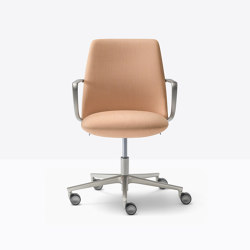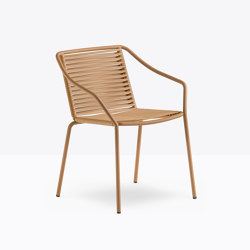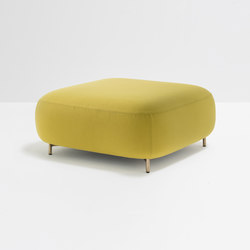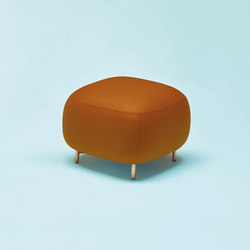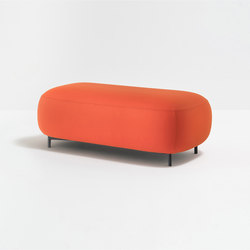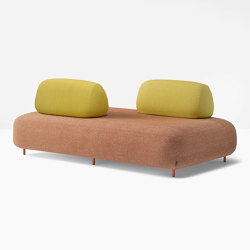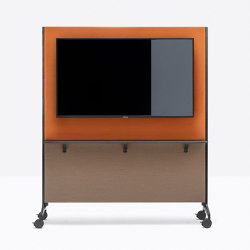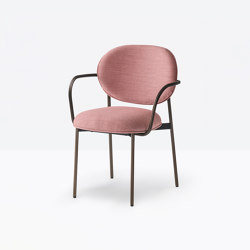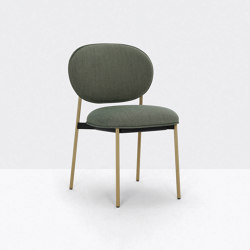‘It’s about sharing perspectives, not building fortresses’: DWA Design Studio x Pedrali
Brand story von Simon Keane-Cowell
MORNICO AL SERIO (BG), Italien
19.11.24
The Milan-based design duo reveal their thinking behind Italian brand Pedrali’s fair stand at this year’s edition of Orgatec.
Italian manufacturer Pedrali’s fair stand at this year's Orgatec, designed by DWA Design Studio, embodies the theme ‘#PedraliColoursofLightness’

Italian manufacturer Pedrali’s fair stand at this year's Orgatec, designed by DWA Design Studio, embodies the theme ‘#PedraliColoursofLightness’
×It’s no secret. It’s a tough time to be a trade-fair organiser. With the proliferation of alternative channels and formats, exhibitors are diversifying their approach to new-product presentations.
And yet.
Anyone who visited the latest, and well-attended, edition of Orgatec in Cologne recently will have been left in no doubt that certain brands still see a value in creating large-scale, concept-driven physical exhibition spaces. Their investment in fair stands that exceed the utilitarian function of a simple plinth for their latest wares by offering a visitor experience rich in discovery and storytelling – and, importantly, brand expression – was patently clear.
A prime example of this was Italian manufacturer Pedrali’s stand, which, with sustainability in mind, was a reuse of the space debuted earlier this year at the Salone del Mobile in Milan. I caught up with its creators, Frederik De Wachter and Alberto Artesani of DWA Design Studio, to ask them about their concept, creative process, and the power and limits of Instagram.
Created by Frederik De Wachter and Alberto Artesani of DWA Design Studio, the transparent fair stand invites visitors to immerse themselves into Pedrali’s universe. Photo: Arseni Khamzin

Created by Frederik De Wachter and Alberto Artesani of DWA Design Studio, the transparent fair stand invites visitors to immerse themselves into Pedrali’s universe. Photo: Arseni Khamzin
×What was the concept for the Pedrali fair stand?
Our concept, ‘#PedraliColoursofLightness’, takes inspiration from the endless sky – a chromatic journey that begins with dawn’s warmth and ends with dusk’s cool embrace, repeating in a daily cycle. To express this idea of lightness, we chose airy materials like gauze and sheer fabrics. Picture a modular grid of pale-blue gauze, like a soft cloud canopy giving rhythm and order to the space.
At the heart of the journey, a large circular table reminiscent of a sundial anchors the space. Adorned with hues of sunrise and sunset, it acts as a ‘living mood board’, holding a curated blend of objects, images, materials and products that weave together the Pedrali universe. Each item captures an almost ethereal lightness that embodies the stand's theme.
Visitors are taken on a chromatic journey through colours from dawn to dusk, transitioning from warm yellow hues to a pale blue tone that harmonises with Pedrali’s product designs. Photos: Frank Jankowski (above) and Ottavio Tomasini (below)

Visitors are taken on a chromatic journey through colours from dawn to dusk, transitioning from warm yellow hues to a pale blue tone that harmonises with Pedrali’s product designs. Photos: Frank Jankowski (above) and Ottavio Tomasini (below)
×Can you say a few words about the creative process behind the project?
The creative process was all about finding materials that had the perfect mix of transparency, translucence and colour. Once we nailed that, we coordinated the flooring and decor to harmonise with this colour scheme. Simultaneously, we worked with Pedrali on fabric, finishes, and colour choices for the furniture that complemented the setting, yet still stood out. Like a great outfit: it all needs to match, but a pop here and there keeps it interesting.
‘For Pedrali, colour is central, so that’s where we started – colour was our guiding star’ to reflect the brand’s identity
How do you express or reflect a brand's identity or messaging through spatial design?
It’s crucial to understand a brand’s core values to express them spatially. For Pedrali, colour is central, so that’s where we started – colour was our guiding star. From there, we built out the concept to make sure the stand truly felt like ‘Pedrali’ in every detail.
Airy materials like gauze and sheer fabrics in layered tones express the concept of lightness, complemented by Pedrali’s thoughtful selection of fabrics, finishes and colours. Photo: Ottavio Tomasini (above)

Airy materials like gauze and sheer fabrics in layered tones express the concept of lightness, complemented by Pedrali’s thoughtful selection of fabrics, finishes and colours. Photo: Ottavio Tomasini (above)
×What's specific about the design of temporary exhibition spaces as opposed to other spatial typologies?
Temporary installations are short-lived, so they have to make a big impact fast. The audience is in and out in a flash, so you need to communicate your concept clearly and immediately. But the temporary nature also lets us push boundaries a bit, try bolder compositions and play with unconventional ideas. It’s like getting a free pass to experiment!
‘To deliver strong storytelling in a space, the concept has to be clear from the start and flow consistently through the design’
We often talk about storytelling in the design of spaces. But how is this delivered exactly?
To deliver strong storytelling in a space, the concept has to be clear from the start and flow consistently through the design. Even naming plays a role; a well-chosen name can help visitors connect with the concept intuitively, even before they take in the visuals. It’s like planting a story seed in their minds.
Simple textures in warm colours are arranged in a structured grid, providing a clear and cohesive overview of Pedrali’s collections. Photos: Frank Jankowski

Simple textures in warm colours are arranged in a structured grid, providing a clear and cohesive overview of Pedrali’s collections. Photos: Frank Jankowski
×Which comes first? The analogue visitor experience of a stand or its Instagrammability?
Both! A strong visual experience in real life will naturally translate well to Instagram. But we want the in-person experience to feel special – like there’s an ‘extra something’ worth seeing live. For example, at the Pedrali stand, the circular table feels different up close than it does through a screen. Those in-person details reward visitors who make the effort to come to the fair.
'We enjoy using materials in unexpected ways to surprise viewers and offer fresh perspectives’
Do you have a preferred material palette?
We love simple textures over precious materials. Our choice of materials depends entirely on the project, so there’s no one ‘signature’ material. We enjoy using materials in unexpected ways to surprise viewers and offer fresh perspectives. Let’s just say we like keeping it interesting!
Transparent and shifting hues draw visitors in, inviting them to experience Pedrali’s design vision as it unfolds with each step taken through the fair stand. Photo: Ottavio Tomasini (below)

Transparent and shifting hues draw visitors in, inviting them to experience Pedrali’s design vision as it unfolds with each step taken through the fair stand. Photo: Ottavio Tomasini (below)
×How do you ensure the fair stands you design are sustainable?
Sustainability is complex, especially with regulations like fire safety that sometimes clash with eco-friendly materials. We always opt for recycled or recyclable materials and avoid assembly methods that complicate disassembly. The grid structure in the Pedrali stand, for instance, allows parts to be reused and reconfigured – a big step towards a more sustainable design.
What do you think of the tendency by some brands to build monolithic, enclosed stands at fairs?
Honestly, the whole point of a fair is to explore different companies’ visions. Brands should allow at least some transparency, so passersby can get a glimpse of their world. It’s about sharing perspectives, not building fortresses!
© Architonic
Head to the Architonic Magazine for more insights on the latest products, trends and practices in architecture and design.








